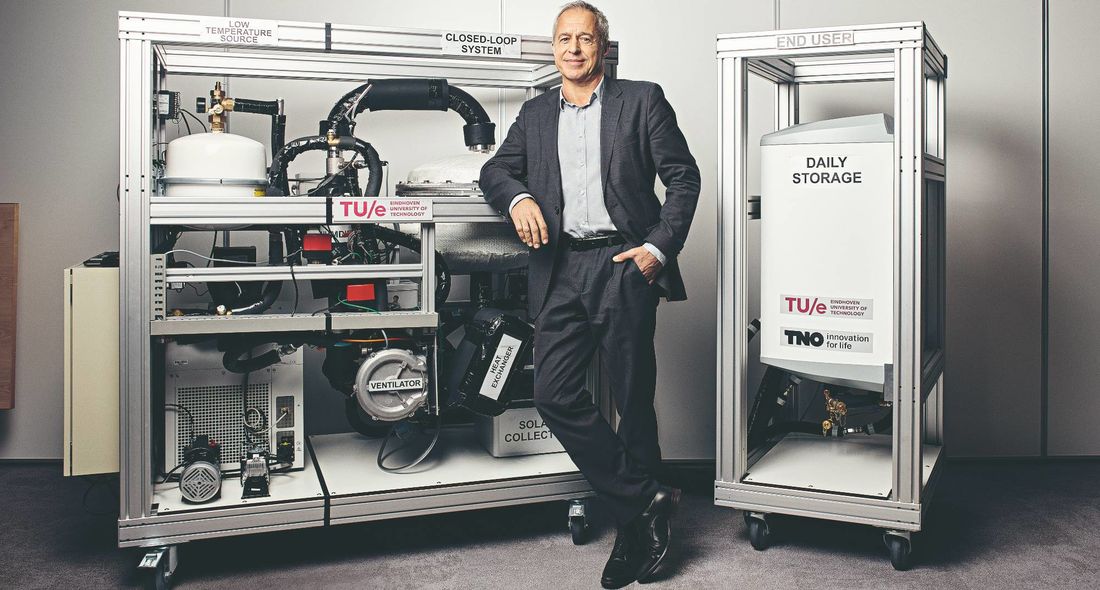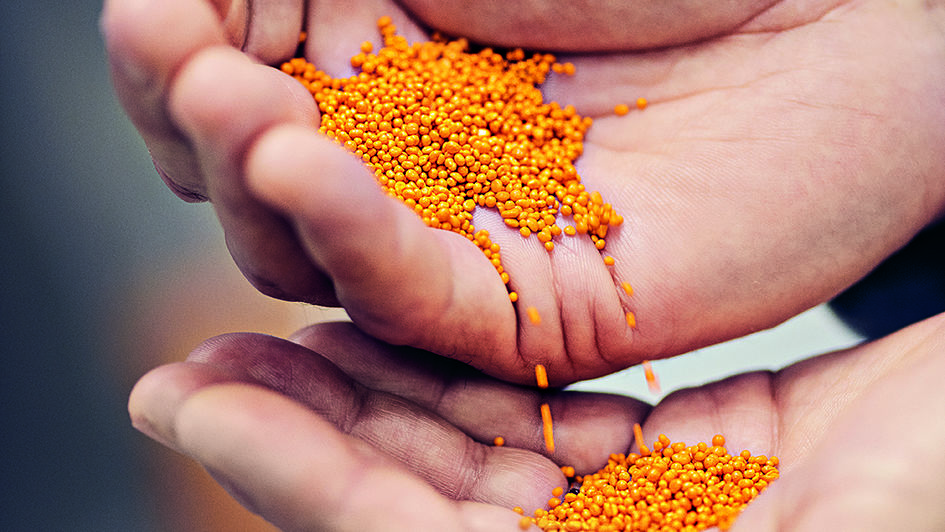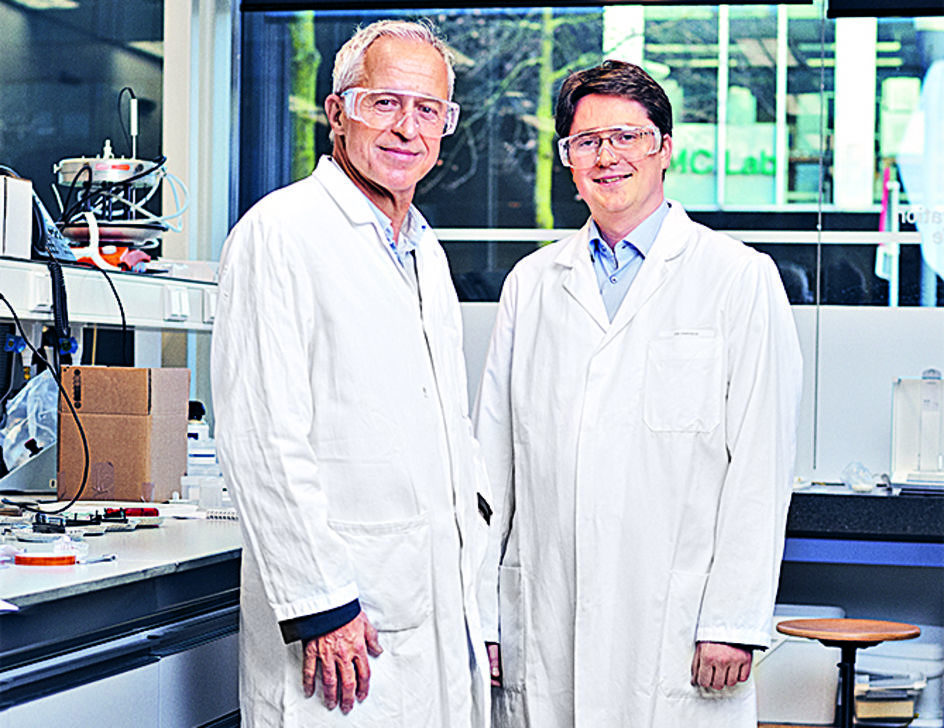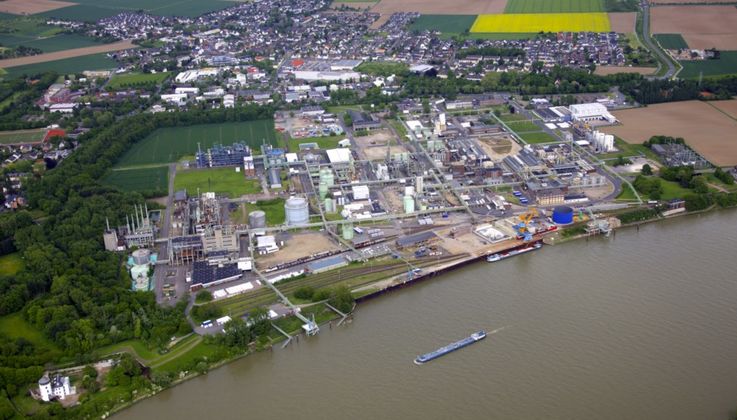
Heating with salt
In Eindhoven, Netherlands, scientists are working on the thermal energy storage systems of the future. The main ingredient is supplied by Evonik.
The sun is our Number 1 source of heat. Using the sun’s energy to heat our homes makes sense and helps to protect the climate. It’s also becoming more and more popular: According to the Bundesverband Solarwirtschaft (German Solar Association), there are almost 2.4 million solar thermal energy systems in Germany alone. Around 71,000 are now being installed every year. These systems collect the sun’s rays to provide warm water and energy for heating purposes. In total, these systems reduced CO₂ emissions by about two million tons in 2018 alone. The problem with solar energy is that less heating is needed precisely on the days when the sun shines the most. Conversely, solar collectors are unable to obtain enough energy on very
cold, cloudy days. As a result, homeowners remain dependent on other sources of energy. Systems that can store energy when the sun shines brightly and release it again as needed offer a solution here. A variety of technologies exist that can be used for this purpose. Their efficiency differs greatly, as does their cost. None of them is perfect. However, an invention that is currently being developed at Eindhoven University of Technology could change that.
HEAT-INSYDE project
The university’s HEAT-INSYDE project team is working on a “heat battery” that is based on thermochemical energy and takes advantage of a phenomenon that has been known for a long time: When crystals of certain salts absorb water, they release heat. If surplus heat from the sun is used to dry these salts, the collected
energy can be released later on by simply adding water vapor to the salt. If the salt remains dry until then, it will retain the stored energy—theoretically it could do so indefinitely.
The technology is as refreshingly simple as the principle it uses. It only has four components: a heat exchanger, a fan, an evaporator/condenser, and a reactor. The system’s real secret and its scientific expertise are in its reactor and the salt. Several years ago, a doctoral thesis at Eindhoven University of Technology involved a laborious search for the right salt among hundreds of candidates. This salt needed to have a high energy density and be inexpensive and stable. It also had to be non-toxic and easy to use, of course. After all, the new thermal energy storage systems would have to operate for decades in the basements of residential buildings.

Inspiration from the kitchen
The salt that was eventually selected was potassium carbonate, which is also known as potash. It its often used in German kitchens as a versatile helper in the household as well as a leavening agent, especially in gingerbread. Several industries, ranging from cocoa producers to glass manufacturers, also use potash. Evonik has been producing this material for the past 70 years at its plant in Lülsdorf near Cologne. The specialty chemicals company is one of the world’s biggest producers of potash, with an annual capacity of tens of thousands of tons. Potash is produced by reacting caustic potash—potassium hydroxide—with carbon dioxide in order to create a potash solution. Evonik produces caustic potash in a joint venture with Nouryon in the city of Ibbenbüren in In Eindhoven, Netherlands, scientists are working on the thermal energy storage systems of the future. The main ingredient is supplied by Evonik 23 North Rhine-Westphalia. The starting material is potassium chloride. Like table salt, potassium carbonate salt is also extracted from salt mines in Europe.
Thanks to the Eindhoven research project, a huge market could potentially open up for this traditional product. An especially positive aspect is that the versatile but seemingly old-fashioned product might instantly become an important factor in ensuring the success of the energy transition. To make this possible, Evonik is one of 12 international project partners that are participating in HEAT-INSYDE. The European Union will provide the project with €7.7 million in funding until 2024. The scientific management of the project is in the hands of the material sciences research group of the TNO, the Toegepast Natuurwetenschappelijk Onderzoek or Netherlands Organisation for Applied Scientific Research. The TNO is similar to Germany’s Fraunhofer Society.
Hot air
The research institute in Eindhoven also houses the only fully functional prototype of the heat battery to date. Its reactor contains a bed of a more complex potash salt composite through which a fan blows hot, dry air. The airflow is heated by a heat exchanger, using surplus solar energy, for example. The warm air heats up the
salt, which dries out, releasing water vapor into the airstream. A condenser extracts the water from the air until the salt is completely dehydrated. The battery is now charged. To discharge it, the fan blows cold and moist air through the dry bed of salt. As the salt absorbs the moisture, it heats the air to well over 60 degrees Celsius. Thanks to the heat exchanger, this heat in the air can be used for space or water heating.
The project partners plan to work together on this basis to create seven compact prototypes for everyday use by 2022 at the latest. These The TNO campus in Eindhoven. The material sciences research group is Evonik’s
project partner for HEAT-INSYDE 24 prototypes will then be installed into single-family homes in the Netherlands, Poland, and southern France, where they will undergo practical testing under a variety of climatic conditions.
Attractive prospects
Huge numbers of people have already applied to take part in the series of tests. This is because the system’s technical specifications sound very tempting for homeowners: For the average four-person household, the energy storage system only has to be about the size of a washing machine. The system can store so much energy that it can release heat for two weeks without any sun. According to the weather statistics, sunless periods are never longer than this in Central Europe. The heat battery only takes up half as much space as the commonly used electricity storage systems that employ lithium-ion technology, even though it has the same output. Moreover, it will cost less than one tenth as much. Although conventional hot water storage tanks are similarly inexpensive today, they take up ten times as much space. The salt battery can store energy for months
without any loss, which no other technology can do. In addition, the heat battery is expected to have a service life of 20 years. Because the battery lacks complicated electronics and the fan is its only movable part, it also requires little maintenance and is extremely quiet. Another bonus is that the salt can be completely recycled.
As is often the case, this simple invention is actually the result of lots of scientific research. The researchers are still working on the optimum structure for the salt bed to enable the airstream to flow through the reactor as efficiently as possible. Additives are put into the salt to keep it dimensionally stable for decades. The additives’
recipe is a carefully kept trade secret. In another doctoral thesis, the focus is now on finding out how the crystal structure of potash can be specifically altered in order to boost its charging rate and storage capacity. This requires Evonik not only to supply material from Lülsdorf in North Rhine-Westphalia but also to draw on its pool of knowledge from 70 years of product experience.




